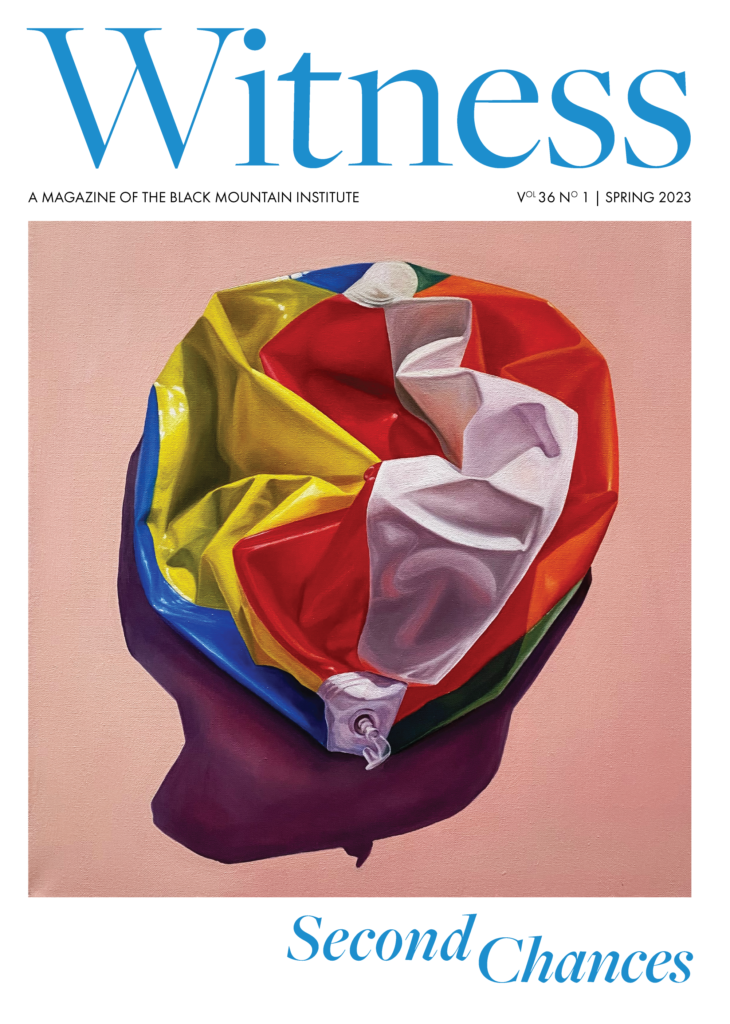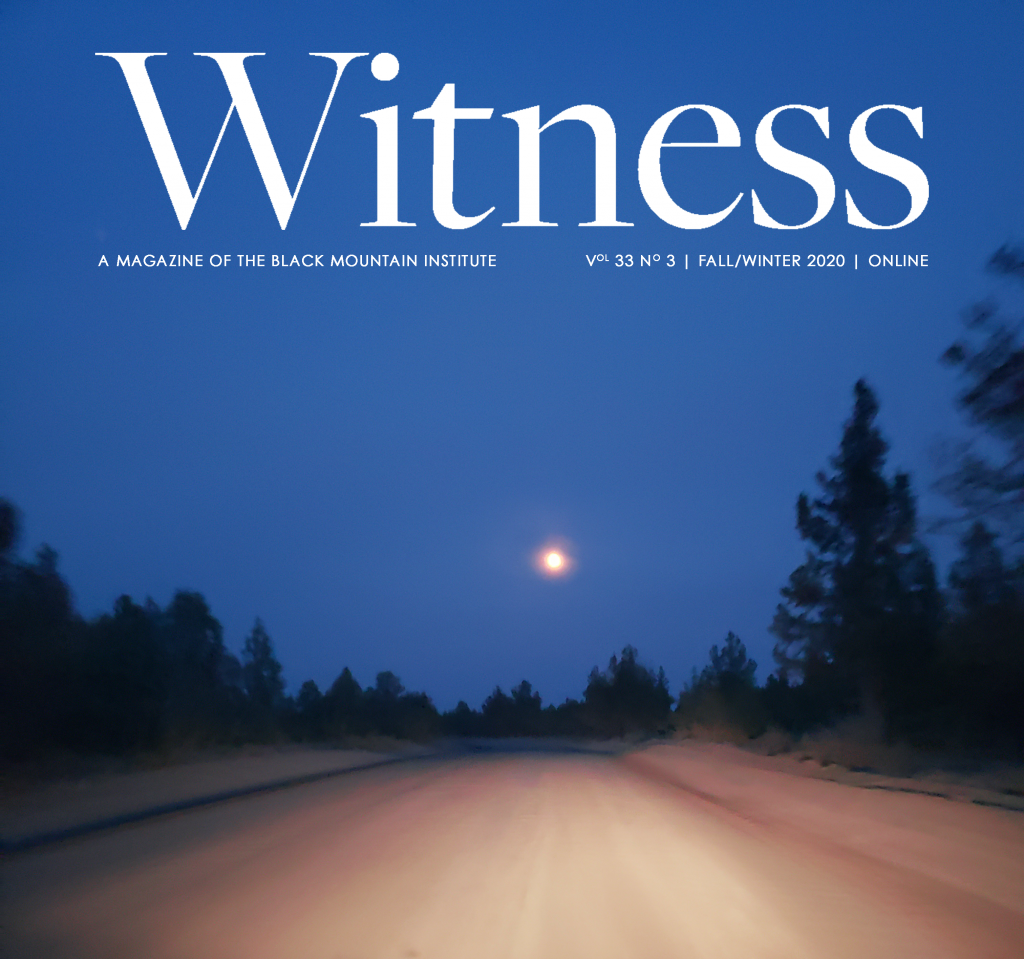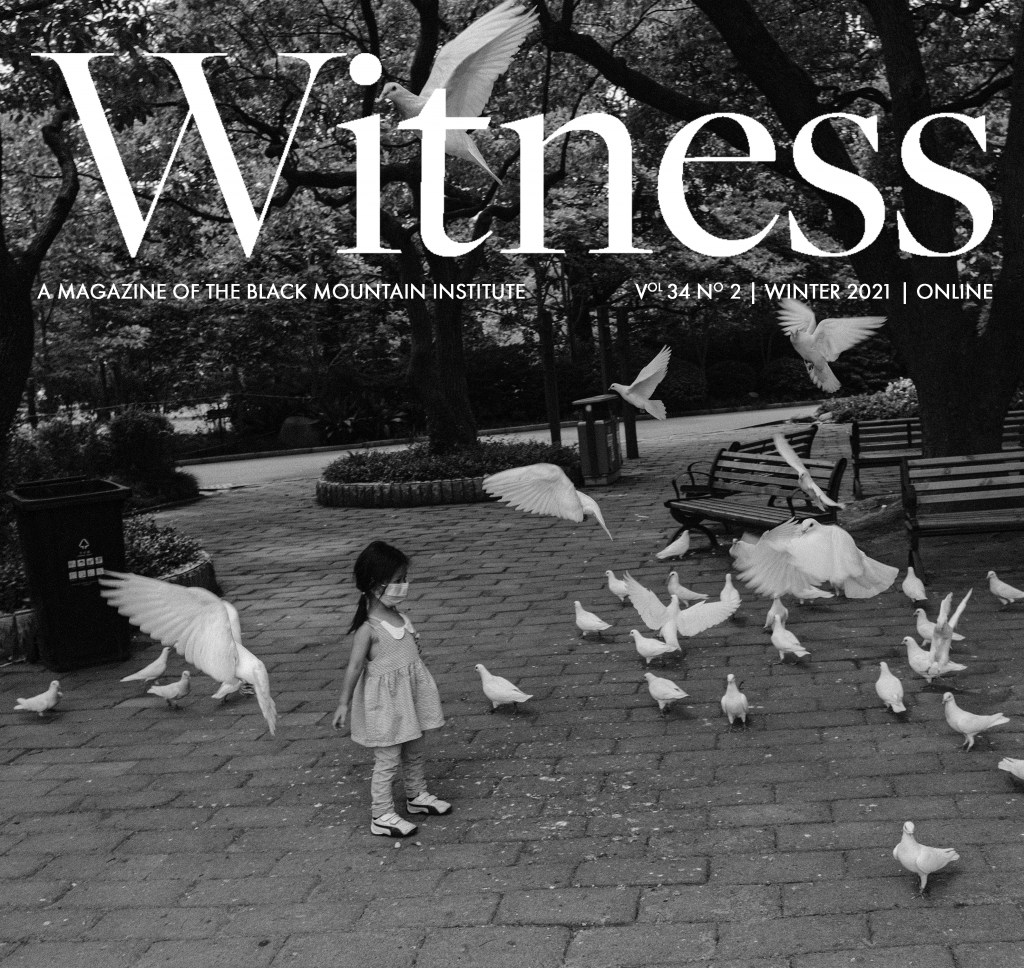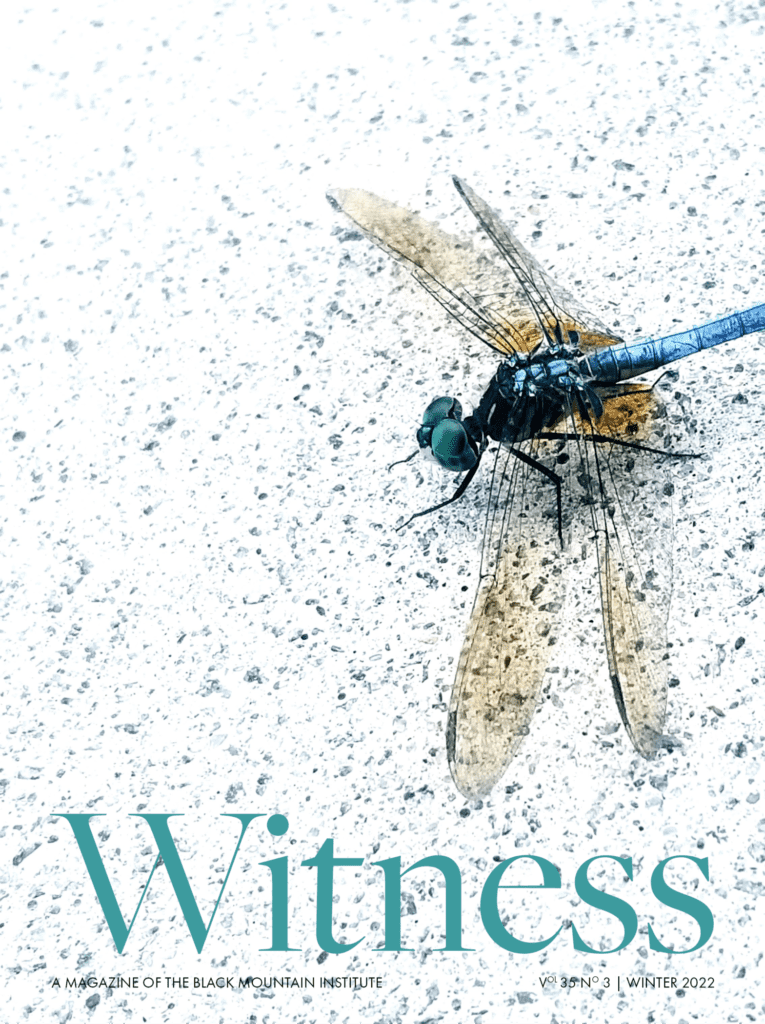by Arianne Zwartjes
It’s funny, my wife Anna said, how when a plane explodes and kills all these people, there’s still all this perfectly undamaged luggage that falls to the ground. As she was saying this the crisp image of a pink suitcase with white polka dots, lying on the dusty roan earth, stared back at us: fallen from the Russian passenger jet that had just exploded over the Sinai.
Her words evoked the vivid memory of watching a Ukrainian family speak to a news reporter the summer before, after the Malaysian passenger jet was shot down over the Ukraine. A body from that plane had fallen through their roof, leaving a large broken area in the ceiling of their kitchen.
We’d been on a flight that passed over Ukraine just hours after the Malaysian plane crashed: returning from a trip to Cyprus and Turkey, we were about to leave Istanbul when we heard the news.
Once we returned home, I couldn’t stop reading about that Malaysian jet being shot down, thinking about the people who became bodies that fell out of the air onto the roofs of other people. About their suitcases: shirts and bras and socks and toothbrushes strewn across the countryside. How all those objects survived the crash so much more intact than the people that had touched them, held them, worn them.
Now, in the autumn of 2015, Anna and I have moved to Maastricht, in the southern Netherlands. I am on another plane, a flight from Amsterdam to Singapore, and as I look at our travel path on the in-flight entertainment screens, I am struck by how many of the places we will fly over are or have recently been immersed in deep violence. We will fly over Ukraine, Georgia, eastern Turkey, Iran, Afghanistan, and Pakistan. I wonder how easy or difficult it is to procure surface-to-air missiles. I wonder if the people on the Malaysian jet had any warning it was coming, or if they were engrossed in their crossword puzzles and onboard movies until the very moment of impact. My stomach is tight with anxiety.
As we fly over Kabul and I watch our inching progress along the flight path, turning it from white to yellow, I think of a Dutch friend who goes back and forth from Maastricht to Kabul, who is down there on the ground below us even now, as we fly overhead. I wonder at the many years she has spent going back and forth, about how it feels each time as the plane descends, landing into such instability. Such a different reality from the calm passivity of northern Europe. I wonder at why she goes, why she chooses to keep going. Or, perhaps, why she comes back? The voluntary alternation between peacetime and war on such a regular, ongoing basis is difficult to imagine.
I am on my way to the Philippines to teach a medical course, and one of the entertainment options on this flight is a Berlitz language-learning program; it teaches basic vocabulary using rudimentary video games. Seeking distraction, I turn it on. As I click over and over on the words l’hôpital and un médecin, with little cartoon illustrations of a white male doctor and an ER cubicle— accompanied by absurd boinging noises for each correct choice—all I can think of is Kunduz. The evening before I’d heard several radio interviews with spokespersons from Médecins Sans Frontières, whose hospital in Kunduz was recently bombed to ruins by U.S. and Afghan forces. They detailed the destruction found by a preliminary MSF investigation: patients literally burning in their beds, medical personnel gunned down as they fled across the courtyard.
The strike followed a devastating week for the hospital, in which fighting drew nearer and the ER and ICU were overflowing with patients: doctors, unable to leave, set up makeshift rotations and watched with panic as more and more patients were brought in, watched with exhaustion and despair each time a patient was lost. “The people are being reduced to blood and dust. They are in pieces,” said Dr. Osmani, an Afghan doctor who traveled from his own hospital in Kabul to volunteer in Kunduz on weekends, and who was killed a few days later in the U.S. bombing of the hospital.
The officially-released story about why the bombing happened changed frequently, but news emerged of erroneous military intelligence suggesting the hospital was being used as a Taliban command center, based on overhead surveillance likely done with unmanned drones.
“Our main question is: How is it that so clearly a civilian structure like that could lose its status as a protected facility?” said Jason Cone, executive director of MSF in the US. “It’s a responsibility of the warring parties to be able to distinguish between civilian and military targets.”
The MSF had re-submitted the GPS coordinates of the hospital only days before, and the hospital was “among the most brightly lit buildings in Kunduz,” with a large white and red flag reading ‘Médecins Sans Frontiers’ across the roof. That line between civilian and military targets—and between wartime and peace—has been slipping for years, maybe decades. In the 2014 Gaza war, for instance, Israel bombed multiple hospitals in Gaza.
The slippage between civilian and military targets by the US has been exacerbated by increasing use of drone attacks, and the use of drones to execute targeted assassinations in places we are not officially at war. There have been significant instances of misidentification. One study done by a US military advisor with access to classified information found that drone strikes in Afghanistan—despite their supposed precision—caused ten times more civilian casualties than strikes from manned aircraft.
Afghanistan was really the birthplace of the Uniteds States’ use of armed drones to carry out strikes, the laboratory where we took drones—already used in the Balkans for surveillance—and turned them into killing weapons. In subsequent years, the US has used armed drones for strikes in Pakistan, Afghanistan, Iraq, Yemen, Libya, Somalia, and Syria.
*
Finished with Berlitz’ rudimentary lessons in French, my legs and back stiff from sitting, tired of the recycled air and monotonous hum of the plane, I scroll through the movies. One of them is Wim Wenders’ documentary Pina, about the incredible German choreographer Pina Bausch.
As it begins, a line of smiling, physically diverse dancers walk unhurriedly across the stage, pantomiming small, absurd gestures, dipping their bodies with each step.
A moment later we see a line of people with shop-brooms sweep a perfect square of dirt onto the stage and a naked woman lies face-down in it, lit only by one diagonal beam of light. She lies still. The slight X of a second beam of light crosses below her feet, near the center of the stage. The woman does not move. She is so still, in the middle of all that dirt.
I realize then that I have accidentally paused the video, held her there so that she is always unmoving, always still.
When I unpause it, suddenly there is an army of women, gaunt, in gauzy slips, all moving in the dirt. They lie scattered like dropped handkerchiefs. They stab themselves in the stomach with their own elbows, an army of advancing zombies, dancing jerkily toward us. Their gowns are sweaty, covered with dirt.
“There are situations, of course, that leave you utterly speechless,” says Pina. “You just have to hint at them.” Their dancing is loose, almost clumsy, as though drunken with grief or despair.
Shortly before leaving for the Philippines I’d read a report about the U.S. use of drones in Pakistan.
“Drones hover twenty-four hours a day over communities in northwest Pakistan, striking homes, vehicles, and public spaces without warning,” the report had said. “Their presence terrorizes men, women, and children, giving rise to anxiety and psychological trauma among civilian communities.”
I tried to imagine what that would be like, to always have these mute, impersonal grey slivers hovering in the sky above you, unmanned, ready to dispense death at a second’s notice. Tried, and failed. Drones began to populate my dreams, suspended in the air, staring noiselessly. I imagine them now far below us on this airplane, a humming army of deadly mosquitos.
The presence of those drones, among many other things, has made people in that northwest part of Pakistan—North Waziristan—afraid to congregate, to bring together their governing councils of elders, even to practice normal burial and funeral rites. Afraid to wash and cover their dead, to hold a communal funeral, to recite prayers over the body.
“Proper burial ceremonies and grieving rituals are ‘essential to reducing or preventing psychological distress’ during times of large-scale disaster,” the report notes. The inability to grieve as a community, to receive the support of others, to say goodbye, is further wounding to people already living under immense duress.
“Will this be the longest day in history? No one is washing the dead. Let the dead then wash themselves,” writes Mahmoud Darwish in Memory for Forgetfulness.
I think of Judith Butler’s writing on open grieving: that it is grief bound up with outrage, and the deeply political question of which lives are considered grievable, allowed to be grieved.
On the screen, a woman holds out her lower arms as though they are cut. The room, a shamble with chairs. The woman is Pina herself. Her chest is a skelter of ribs. Her silk slip hangs from her chest. Beneath it, her breasts are small triangles of flesh.
*
The plane moves inexorably on, its progress marked by a monotonous hum. The on-screen map shows our little icon of a jet moving in an arcing trajectory over Afghanistan and Pakistan.
The term “anticipatory anxiety” was used in the report to describe the trauma of constantly waiting for imminent attacks. Uncontrollability, they note, is a key element of this anticipatory anxiety.
In interviews with communities living under drones, people said things like, “Before the drone attacks, it was as if everyone was young. After the drone attacks, it is as if everyone is ill. Every person is afraid of the drones.”
One humanitarian worker—an American—who was interviewed, asked, “Do you remember 9/11 . . . what it felt like right after?
“I was in New York on 9/11,” he continued. “I remember people crying in the streets. People were afraid . . . [they] didn’t know if there would be another attack. There was tension in the air.
This is what it is like. It is a continuous tension, a feeling of continuous uneasiness. We are scared. You wake up with a start to every noise.”
It is almost difficult to remember now, but so much of the spreading US warfare—and the widespread use of drones—began with those 9/11 attacks, what Ann Cvetkovich calls “the shadow of September 11 and its ongoing consequences”: our invasion of Afghanistan, the declaration of war against Iraq.
Far below us, looking out the windows of the plane, I could see land: tan, dry, and cracked.
A Waziri journalist named Noor Behram, who investigates drone strikes, describes how fearful the children have become: “If you bang a door, they’ll scream and drop like something bad is going to happen.”
When children grow up in the circumstances of such psychological trauma, it deeply impacts their development: they may be unable to trust others, experience bouts of explosive anger, or periodic emotional breakdowns. Because of a lack of access to mental health care in Waziristan, people have been tied in their houses or locked in rooms alone after breakdowns due to repeated drone strikes in their community.
“A city of broken teeth / the thuds of falling / we have learned to sing a child calm in a bomb shelter / I am singing to her still,” writes Solmaz Sharif in Look, her collection of poems built on a scaffolding of phrases from the US Department of Defense dictionary of military terms.
Reading the report on drones I couldn’t stop thinking about the enormous US export of war. Of violence, weapons, and destruction. Every time I hear an American express bewilderment or amazement—still, even now, even after the recent memory of Iraq and Abu Ghraib—that anyone from some other part of the world could have cause to hate us, all I can think about are bombs, drones, minefields, machine guns.
We are flying over ocean now. Far across the grey water, the sun hits the sea and makes a silver line before the horizon.
*
The language used to talk about the ethics of drone usage includes terms like dronespace and distant intimacy.
Drones finally completely destroy an element of conventional thinking about war, that combatants share physical vulnerability, that there is an element of reciprocity in the exposure to danger.
They bring a radically asymmetrical relationship, one where the individual being targeted has no means of response, no ability to exercise autonomy.
In a remarkable November 2017 New York Times article, “The Uncounted,” Azmat Khan and Anand Gopal report the results of intensive on-the-ground research of civilian deaths from coalition airstrikes in Iraq, finding that over a period of 18 months, civilian deaths caused by “precision airstrikes” were 31 times higher than recorded by the US. They describe the obliteration of the homes of two civilian brothers and their families, which coalition forces reported as the bombing of a car manufacturing factory belonging to Daesh, or ISIS. “Though the Razzos hadn’t known it,” the article says, “the burden of proof had been on them to demonstrate to a drone watching from above that they were civilians.”
“While the drone operator knows a great deal about the target and holds them in a position of immense vulnerability, the target cannot know anything about their interlocutor,” writes John Williams, a researcher of just war theory. Drones will often hover over and surveil targets for days or weeks before calling in a strike, looking exactly and precisely for one person, watching their actions, while that person may have little idea a drone is hovering thousands of feet above them.
“You cannot surrender to a Reaper. That is true, of course, for a B-52 bomber, Tomahawk, or MX missile, or a host of other weapons systems. Yet these do not claim the intimacy of drones— the discriminatory precision based on enhanced intelligence gathering and personalized targeting,” writes Williams later. “The illusion of proximity – lost through previous technological manifestations – is restored by drones.” Distance, intimacy, space.
*
Since Trump came to office, the safeguards to try to prevent civilians from being killed by US military drone strikes have been “loosened or simply shredded,” according to a book on the history of drone warfare. And many other countries are also now making or acquiring drones for military and surveillance use, including Turkey, Russia, China, India, Iran, Britain, France, Iraq, Nigeria, and Pakistan.
Israel, like the US, has been using drones—first for surveillance, and then increasingly for armed strikes—for over thirty years. In Gaza, Israeli drones fire missiles as well as guiding attacks by F-16s or helicopters.
“When you hear the drones, you feel naked and vulnerable,” said Hamdi Shaqura, who lives in Gaza City. “The buzz is the sound of death. There is no escape, nowhere is private. It is a reminder that [we are] living completely under Israeli control. They control the borders and the sea and they decide our fates from their position in the sky.”
Israel first began the widespread use of drones in the early 1980s, during its invasion and long occupation of southern Lebanon. The 1982 Lebanon war was called “Operation Peace for Galilee” by the Israelis; “the invasion” by Lebanese. It came to a head with the siege of Beirut in the summer of 1982: the land, air, and sea bombardment that Mahmoud Darwish’s Memory for Forgetfulness chronicles in horrific detail. “An apprehensive silence carrying the weight of metal, under a sun veiled by all the colors of ash,” Darwish writes of that bombardment.
In the early 2000s Israel began its use of drones over Gaza, and targeted drone attacks have killed hundreds of Palestinians in ensuing years.
Beginning during Operation Cast Lead in 2008, Israel also used drones to practice “roof knocking”: firing small missiles at the roof of a building to warn inhabitants that a larger strike is coming. According to Israel, they provided a 10-minute warning for inhabitants to escape. A United Nations commission found that the tactic was not effective: it did not give residents sufficient time to flee, and led to chaos and panic.
During college I lived in the heart of downtown Jerusalem, at the intersection of Jaffa and King George streets. I loved it—was so charmed by Jerusalem’s old city, with its ancient stone walls and its Muslim, Armenian, Christian, and Jewish Quarters; by the street markets full of spices, olives, hummus; by the way everything would close down in the early afternoon on Fridays, and students and businessmen alike would be hustling through the streets with bouquets of flowers to get home in time for Shabbat candle-lighting. Loved sharing the Passover Seder dinner with old family friends who were Israeli, loved the ceremony and the food and the way the old cultures blended together. I remember the way the light refracted, the sacredness of the high desert.
At the same time, though, I knew from high school friends who were Israeli-Arab and Palestinian how complicated the reality was. At some point in the semester, we traveled to Ramallah and Bethlehem in the West Bank and saw the degree to which Palestinians were increasingly displaced and confined. We visited ancient olive groves that were in danger of being cut down, drove down the rough dirt roads past unpainted cinder-block homes, saw the border wall and the groups of teenage Israeli soldiers with their green uniforms and standard-issue assault rifles. And we saw the fancy new housing developments, with smooth blacktop streets and red roofs and swimming pools, that were illegal Jewish settlements encroaching onto Palestinian land.
I remember feeling deeply bewildered at how Jewish Israelis—a people who had, so recently, experienced immense violence and atrocity, even the very denial of their right to exist—could in essence turn around and commit similar oppression and denial upon another people. Could claim the land of that other people as though they’d never even existed, bulldoze their villages into dirt, exile them from their homes and ghettoize them so profoundly.
In early March of 2018, Israel began using drones to drop tear gas on Palestinian protesters in Gaza and the West Bank. A potent crowd-control technology, tear gas causes burning of the eyes and skin, gagging, and panic; it has also led to permanent blinding and caused numerous deaths around the world.
In the Aida refugee camp outside Bethlehem, into which many displaced Palestinians have been pushed, tear gas deployment occurs at least monthly, and often multiple times a week, leading a 2018 report from Berkeley’s School of Law to describe Aida residents as likely the most tear-gas exposed population in the world.
The report noted that tear gas exposure in the camp was “widespread, frequent, and indiscriminate,” and that its use was primarily unprovoked. Aida residents noted that tear gas was used “not as a defensive weapon to protect against riots or defend public safety, but rather as an offensive weapon.” One person interviewed said “they use it when they are bored, when they want to provoke a clash, or when they want to get into the camp.” And nowhere is safe—tear gas seeps through closed windows, into kitchens, bedrooms, school classrooms. People in the camp reported tear gas lingering as long as three days in their homes and schools. Those interviewed said that with every exposure, “they felt like they were choking and couldn’t breath. ‘Every time, I feel like I’m going to die. You don’t know that you will survive. It’s like hell every time,’” said one interviewee. “It doesn’t just go away, I can’t see or work or think all day.”
Mothers described children picking up littered tear gas cannisters from the street and being accidentally gassed—the spent cannisters so plentiful that it is hard to clean them all up.
In October of 2015, an Israeli border patrol officer drove through the streets of the Aida camp in a patrol vehicle, issuing a warning in Arabic through a loudspeaker. “People of Aida refugee camp, we are the occupation forces. You throw stones and we will hit you with gas until you all die. The children, the youth and the old people, you will all die. We do not want to leave any of you alive.”
In the video, the vehicle moves through dark streets, backlit by streetlamps; its headlights define its silhouette. The voice on the speaker is loud, insistent, repetitive. It reverberates off the close concrete walls.
People in Aida are deeply concerned that the tear gas now being used on them is “dramatically more potent, longer lasting, and dangerous” than previous compositions. “While tear gas is usually composed of a mixture of synthetic or naturally occurring gases, including pepper spray, “the specific chemical utilized by the [Israeli security forces] in recent years is unknown”, notes an article in Al Jazeera. “This is not tear gas, it is poison,” said one camp resident.
During the May 2018 Great March of Return—six weeks of protest by Gazans against their displacement and blockade—a series of weekly protests were attended by over 10,000 people in predominantly-nonviolent protest. Israel used drones to dispense tear gas on the crowds, even dropping tear gas cannisters in an area with vehicles clearly marked ‘Press,’ and on a tent of women and children more than 500 meters from the border. Eight-hundred people were treated for gas inhalation. One photo showed a man standing in front of rising clouds of gas, eyes closed and face grimaced in pain, holding aloft a tennis racket he was using to return tear gas cannisters fired by Israeli soldiers.
The drones being used to drop tear-gas can carry six cannisters and can drop them individually, in clusters, or all at once. Israel is one of the leading countries in the world in developing drone technology, among other weaponry. According to Major Assaf Shaish, who in 2018 was head of the IDF’s drone department, the IDF is now developing technology for the use of drone swarms—which could push back protesters or be used for attack missions—and “suicide drones” equipped with grenades.
In recent decades, Israel has tested numerous new technologies of war on the Gazan population, from white phosphorus to ‘butterfly bullets’ to DIME explosives which hurl miniature particles throughout the patients’ organs, causing damage that is almost impossible to fix. Many of these weapons have been devastating in their toll on human life.
One Israeli human rights lawyer, who tracks the export of weapons, notes that Israel has used conflicts in the past to “showcase its weaponry with the intention of selling it on.” Israel, like the US, has been criticized for selling weapons to governments with poor human rights records— including to the Malaysian government during its recent bloody ethnic cleansing of the Rohingya minority.
Israeli weapons companies are now actively partnering with the US Department of Homeland Security to bring similar surveillance and technologies of low-intensity warfare to the US borderlands. Like Gaza, the US borderland is quickly becoming a zone stripped of constitutional rights.
In 2016, Palestinian artist and filmmaker Khaled Jarrar journeyed along the US-Mexico border, observing similarities between the border wall there and the wall between Israel and Palestine. He created an installation which locals are calling “Khaled’s Ladder”: taking metal from the border wall, he constructed a ladder and planted it upright in open space near the wall in Tijuana. This was his first trip to the US, after being prevented by Israeli soldiers from leaving the West Bank to attend an exhibition featuring his work at the New Museum in New York, despite having obtained a visa.
I saw Jarrar speak at the University of Arizona, where I’d gone to graduate school and taught English for years. We sat in a cool, air-conditioned conference room with floor-to-ceiling glass walls. He was presenting, together with Jewish artist Robert Yerachmiel Sniderman, on art and images of the occupation.
Gaza has been a laboratory for weapons testing, for both Israel and the US, Jarrar said in his presentation. Some of the weapons tested on Gazans were developed right here at the University of Arizona, which has extensive defense and homeland security research programs.
Jarrar showed us an excerpt of an old video, from the late eighties or early nineties, about the settlement of Israel. Israeli strategy towards Palestinians became known as “break the bone” strategy, the video narrator said in a soothing voice.
The “break the bone strategy,” I find when I look it up later, is a literal term: during the first intifada which started in 1987, Yitzak Rabin directly ordered soldiers to break the bones of Palestinian protesters.
Though Rabin eventually shifted from military suppression to attempts at a diplomatic solution, he was assassinated before the “two-state solution” could be finalized in the Oslo accords. The right-wing government that took power after his death shifted course: back to military suppression, back to ongoing Israeli incursion into and settlement of the West Bank. A recent State Department map shows Palestinian populations in the occupied West Bank in white, against a green Israeli background, and I am shocked to see the degree to which the once contiguous territory has been moth-eaten, broken up by illegal Israeli settlements. The Palestinian populations now are a scattering of broken teeth.
Jarrar says, “As Palestinians, we cannot know our landscape. We are separated . . . the occupation prevents us from knowing one another. We are alien in our own land. Our imaginations are proscribed, imprisoned.”
A close friend, an American writer who just returned from a research trip in Egypt, Jordan, Israel, and the West Bank, described her time in Egypt and Jordan as joyful, beautiful, expansive. In contrast, she said, in Israel everything felt so heavy, pre-determined, walls and barbed wire fence everywhere. She took the buses that mostly Palestinians and Israeli Arabs use, and they were constantly being stopped at checkpoints, forced out into the broiling sun, into caged-in areas, while the bus was searched by 20-year old Israeli soldiers with machine guns. At one point, she thought: if we have to stand here any longer in this cage in the hot sun, I am going to lose it, lose my shit entirely. And if I feel this way, after a week or two weeks or three of this treatment, how do people here stand it? “Even the old women were angry, furious, you could see it in their faces, and if you’re making even the old women hate you…” her voice trailed off.
Israel has become distorted, built itself into a cage by caging in the people it has displaced. James Baldwin described racism in the US in similar terms: “No one has pointed out yet with any force that if I am not a man here, you are not a man here. You cannot lynch me and keep me in ghettos without becoming something monstrous yourselves.”
*
In early 2019, Michael Rakowitz, an American artist of Jewish Iraqi heritage, withdrew from the 2019 Whitney Biennial. He withdrew after it became known that Warren Kanders, the vice chair of the Whitney’s board, was the owner of Safariland, a manufacturer whose tear gas and other munitions have been employed against asylum-seekers at the US-Mexico border; against protestors everywhere from Standing Rock, Ferguson, Oakland, Puerto Rico, and Egypt; and against journalists and civilians in Gaza and the West Bank.
“For me, this was a material evidence of the way in which there’s a not-so invisible line that connects the museum, here in New York, to spaces like the border wall, and Palestine, and Istanbul, and Kurdistan, and everywhere,” Rakowitz explains. “When I was at MIT a few years ago there was a scientist who told me that, in science, when you want to know how a system works, you introduce a coloring agent…and so the gas was this incredible agent that made very visible and very, very clear the way in which the power structures had been drawn.”
“In the end,” Rakowitz said, “I remembered the tear-gas cannisters that I saw at Dar Jacir, at Emily Jacir and Anne-Marie Jacir’s [artist’s] residency in Bethlehem. . . This beautiful house that their ancestor built is right there at the border wall, and it’s where demonstrations [are held] against the Israeli army, and it’s where those tear gas cannisters end up, in the garden. So instead of picking flowers, they’re gathering the tear-gas cannisters. And these things for me are a very physical and visual symbol of bodies that are being evacuated from the world, either through death or through displacement.”
When asked why he does work in Palestine, Rakowitz responds, “To say that art doesn’t have a place in these cities under siege is a further dehumanization of the people that live there, and a spectacularization of this violent image that we have of [such] places.”
“But I also have some very real historical and autobiographical connection to that place,” he continues. “It comes from my grandparents being Arab Jews from Baghdad who were there for millennia, and suffering the heartbreak of having to leave when nationalist programs in the Middle East made it impossible for them to stay there. I grew up in a house where all the food was Iraqi, and the music at family functions were classic Iraqi songs. It’s not that there’s not a difference between a place like Ramallah and Baghdad, but there is [also] quite a lot of connection. . . And I believe that our liberation and our struggle for that liberation is intertwined.”
*
Belgian-Iraqi choreographer Mokhalled Rasem was born and trained in Baghdad, and now directs at the Toneelhuis in Antwerp. During the war that resulted from the US invasion of Iraq, he fled to Belgium as a refugee, waiting five years to receive his papers there.
In 2015 Anna and I went to see one of his performances, “Body Revolution,” at the Theater aan het Vrijthof in Maastricht, climbing many sets of increasingly-narrow stairs to the smallest dance theater on the top floor. In “Body Revolution,” three men dance, silently, in front of a screen projecting images of destroyed buildings.
“Body Revolution is about violence, and what violence does to a person. How violence develops into fear, [and] fear stays in the body,” Rasem said in 2015. It explores the responses of those who have fled, who have made it to safety, to seeing the violence still transpiring at home.
As the lights go down, the audience tapers into silence.
White sheets hang behind the dance space; a projection on them slowly pans to a scene of wrecked buildings, grey and black and abandoned. Instantly I am carried back to Darwish’s lyric, Memory for Forgetfulness, where he describes the vacuum bomb dropped on Beirut by Israel: “It creates an immense emptiness . . . sucking the building down and turning it into a buried graveyard. And there, below . . . the residents of the building keep the varied forms of their final, choking, gestures. They turn into statues made of flesh with not enough life for a farewell.”
On the stage, more scenes of destruction, the demolished plaster white and grey. The dancers begin to emerge, cloaked in white and beige, from amidst the wreckage. Their bodies are swathed like mummies. The buildings projected behind them are a falling through.
The three dancers slowly unwrap themselves, their dark beards and hair become visible, their faces, their bodies in loose white clothes. They look through us, they look beyond.
We see them through a projection of shattered glass, webbed as though many heads had hit it at once. Two beautiful old sofas, ornate and antique, line a room, and beside them a wall of plaster blown in.
One of the most devastating aspects of US drone strikes, in Iraq and northwestern Pakistan and elsewhere, was ‘double-tap,’ the policy of carrying out multiple strikes in succession, so that anyone who came to assist those injured or buried in the rubble were putting their own lives at risk. Such a cynical move on the part of the aggressor undercut one of the only glimmers of light in times of war: the willingness of people to help and care for each other.
The dancers, standing, hold each other tenderly.
“In this show the body screams without a voice…and breaks without words,” writes Mokhalled Rasem.
The men dance silently, without any sound, while images of themselves appear projected on the screens behind them: sitting calmly amidst the plaster dust and wreckage. It is an eerie disembodiment: the bodies dancing, their shadow-selves behind them on the screen.
In front of the screen, the actual dancers dive to the ground. Over and over their bodies hit the floor. Seated near the stage, I can feel the impact they make when they hit.
One of the men’s projections sits quietly atop layers of collapsed concrete, floors and ceilings and roofs in rubble, smoking a cigarette.
The projections begin to transition, to change from images of bombing in Iraq and Syria into images of other conflicts, other eras—scenes of war, of police brutality, of attack. At first it feels too much: crude, heavy-handed. But after a while, watching the violence and agony of their bodies jackknifing in the projections, it begins to seem to me like something else: a way of declaring the tragedy and violence now being imposed on their homeland as having its place in a long history, a deliberate claiming of space and recognition in the historical register. A way of acknowledging that so many of these conflicts—like the technologies of war used in them—are interwoven, connected by webs of power and profit.
As the piece ends, the last dancer left on stage retreats back into the stone and plaster now projected on the screen. His white clothing blends with the white of the rubble. He slowly, almost imperceptibly disappears into the screen, through it, one limb at a time.
Only his face left now, he stares out over us: glassy, vacant, surrounded by the collapsed landscape.
 Arianne Zwartjes teaches for Sierra Nevada University’s low-residency MFA program. In her other life she has worked as a wilderness-medicine instructor, an EMT, and a carpenter. She is the author of the lyric nonfiction, medical-humanities book Detailing Trauma: A Poetic Anatomy. Her writing won the 2011 Gulf Coast Nonfiction Prize, was a Best American Essays Notable Essay, and has appeared in Tarpaulin Sky, Kenyon Review, The Southern Review, and other publications. Find her at ariannezwartjes.com.
Arianne Zwartjes teaches for Sierra Nevada University’s low-residency MFA program. In her other life she has worked as a wilderness-medicine instructor, an EMT, and a carpenter. She is the author of the lyric nonfiction, medical-humanities book Detailing Trauma: A Poetic Anatomy. Her writing won the 2011 Gulf Coast Nonfiction Prize, was a Best American Essays Notable Essay, and has appeared in Tarpaulin Sky, Kenyon Review, The Southern Review, and other publications. Find her at ariannezwartjes.com.
Twitter: @arizwartjes
Instagram: @ariannezwartjes







